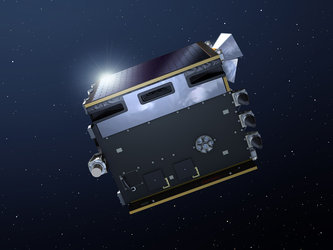Fly by fibre
Named for a divine messenger in Norse mythology, the Hermod payload will test novel multi-line fibre optic cables and high-density connectors.
Down on the ground optical fibres – light-based signals pulsed along hair-thick lines of glass – have been progressively replacing metal wiring for communications infrastructure, offering practically unlimited bandwidth with decreased weight and increased flexibility.
Spacecraft designers are interested in their capacity to reduce mission mass – the amount of wiring flown on a typical space mission can run to many kilograms – while also taking advantage of optical fibres’ resistance to temperature and radiation.
The aim is to make the use of optical fibres in space more straightforward and bring down the cable volume needed still further by demonstrating the same kind of high-density link connectors employed by terrestrial industry.
The experiment comprises 12 fibres inside four independent transmission lines with eight high link connectors. The electronics generates randomised signals to pass through the system, and measures the bit rate error over time.
The aim is to build up a detailed statistical picture of how the different connectors perform across the satellite’s lifetime, combined with additional orbital and environmental parameters such as temperature measurements.
ESA worked with Norwegian company T&G Elektro and Spanish firm DAS Photonics to develop this experimental payload. To save time the team adapted systems from the existing Alphasat Environment Monitor (built by EFACEC, Portugal), testing optical fibre performance in the geostationary space environment.















 Germany
Germany
 Austria
Austria
 Belgium
Belgium
 Denmark
Denmark
 Spain
Spain
 Estonia
Estonia
 Finland
Finland
 France
France
 Greece
Greece
 Hungary
Hungary
 Ireland
Ireland
 Italy
Italy
 Luxembourg
Luxembourg
 Norway
Norway
 The Netherlands
The Netherlands
 Poland
Poland
 Portugal
Portugal
 Czechia
Czechia
 Romania
Romania
 United Kingdom
United Kingdom
 Slovenia
Slovenia
 Sweden
Sweden
 Switzerland
Switzerland





























